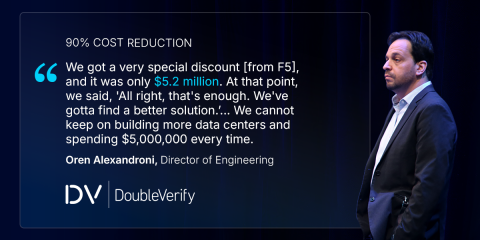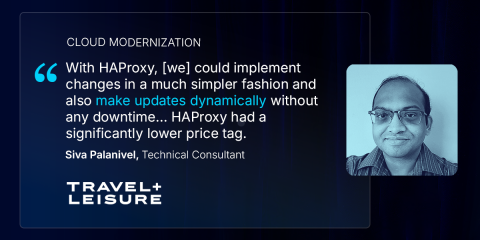Escape the F5 Upgrade Cycle. Scale Without Limits.
Join the industry leaders saving 90% on TCO by switching to HAProxy. Stop worrying about "ballooning" hardware costs, unpatched security vulnerabilities, and End-of-Life disruptions plaguing legacy vendors.
Migrate from F5 to HAProxy for more power over costs, deployments, security, and your customer experience.


F5 migration office hours
Join this live, unrecorded session and walk away with a clear, cost-effective plan for your F5 migration.
Book a Migration Consultation
Request a consultation today, and our team will guide you through the process.
Worried about iRules? Don't Be. We Have a Proven Process.
Migration isn't just about replacing hardware; it's about modernizing your architecture without breaking your business logic. We employ a hybrid approach that combines automated tooling with expert verification to ensure your business logic is transferred seamlessly.
Step 1: Jumpstart with Automation
Use our open-source conversion tool to instantly translate your common F5 configurations (like Virtual Servers, Pools, and standard persistence profiles) into clean HAProxy syntax.
Step 2: Refine Edge Cases
For complex logic and custom iRules, we bridge the gap using AI-assisted analysis and manual refinement. Our team helps you map legacy logic to modern HAProxy features like ACLs and Maps.
"The configuration is straightforward and easy to understand, which made the transition smoother." — Qin T., Sr. Manager, IT
DoubleVerify Rejected a $5.2 Million F5 Quote
When DoubleVerify faced a hardware refresh, F5 offered a "special discount" totaling $5.2 million. That was the breaking point. By migrating to HAProxy Enterprise, they reduced their costs to a tenth of what they were paying before. They replaced proprietary hardware with scalable commodity servers, gaining network-wide observability in the process.
How Roblox Handles Millions of Requests Per Second
During the COVID-19 surge, Roblox faced a "ballooning price tag" and supply chain constraints with their hardware load balancers. They migrated to HAProxy for its "sheer capacity" and ability to handle millions of RPS at the edge. Today, they manage hundreds of instances globally with a dynamic, automated build pipeline that requires zero manual intervention.
Travel+Leisure Migrated 1,200+ VIPs to the Cloud
Moving to a microservices architecture with F5 iRules was becoming too complex and expensive. Travel+Leisure successfully migrated over 1,200 Virtual IPs (VIPs) to HAProxy. The result was a significantly lower price tag and the ability to make dynamic updates without downtime—a story of simplicity rather than complexity.
Why Switch to HAProxy One?
Cost-efficient scaling
Cut your total cost on application delivery while increasing capacity. No more paying for idle hardware.
Fortress-Level Security
Protect your apps with a multi-layered security suite including WAF, Bot Management, and DDoS protection—all integrated into a single product.
Any Environment
HAProxy is flexible and programmable, allowing you to tailor it to fit your architecture and any environment, whether on-premises or in the cloud.
Single Pane of Glass
Manage your entire fleet with the HAProxy Fusion Control Plane, providing centralized automation and monitoring that replaces complex legacy management tools.












.svg)

.svg)